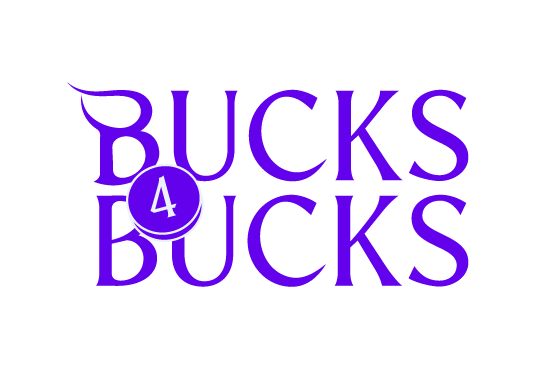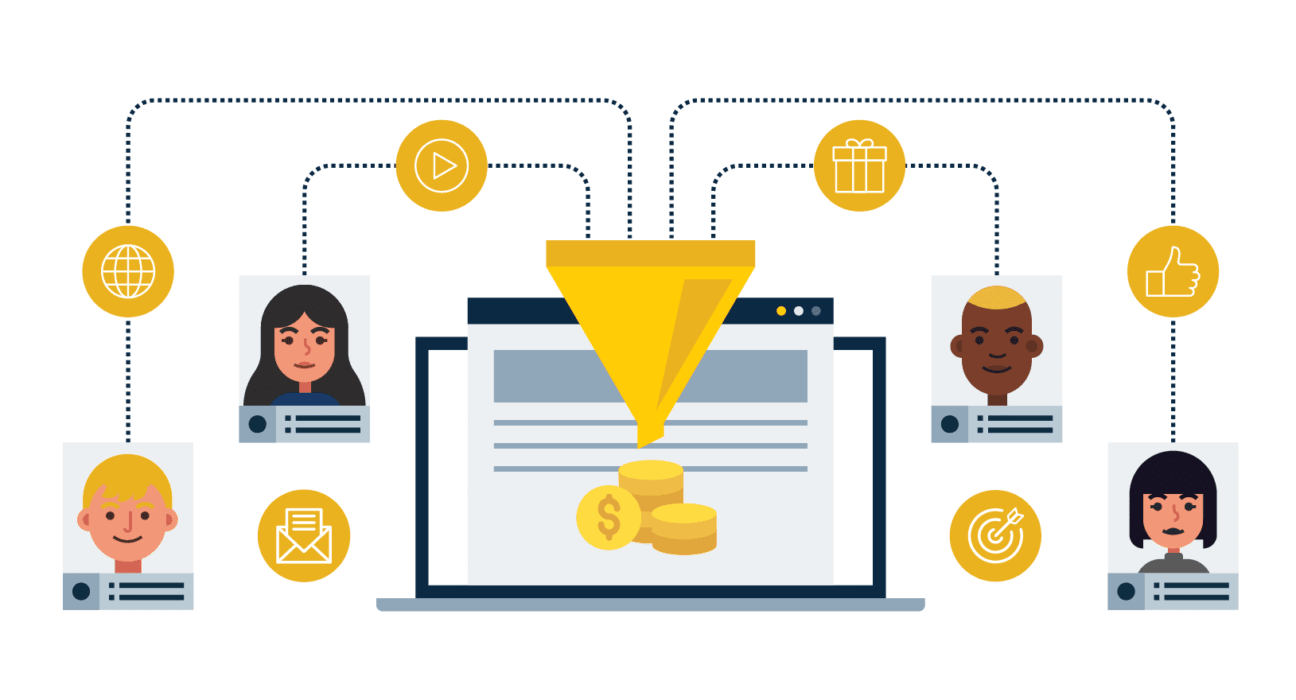Here’s a step-by-step tutorial on how to effectively generate and convert relevant leads for your web design services. This method involves using a combination of tools and strategies to streamline the process and maximize your chances of success. Whether you’re a seasoned marketer or a newbie, these steps will help you achieve your client acquisition goals.
Step 1: Idea Generation and Tool Development
- Brainstorming: Begin by brainstorming potential sales channels and niches. Identify keywords that potential clients might use to search for web design services.
- Tool Development: This step is a bit technical; you need a tool that can scrape relevant data from websites. The tool should allow you to input multiple keywords and extract website URLs, copyright text, email addresses, and phone numbers. You can probably do that if you are a bit familiar with python, or you can search the web for those kinds of tools.
Step 2: Data Collection and Filtering
- Keyword Entry: Input your chosen keywords into the tool. For instance, if you’re targeting “best web designer in japan,” enter this keyword to initiate the scraping process.
- Data Extraction: Let the tool gather data from Google’s search results. Extracted information should include Website URLs, Copyright Text, Email Addresses, and Phone Numbers.
- Filtering: Apply filters to the data. In your case, focus on websites with copyright text dated 2019 or older. This step ensures that you’re targeting businesses that might require updated web design services.
Step 3: Lead Conversion Strategy
- Prepare Your Sales Team: Have a dedicated sales team ready to work on converting these leads. Communication skills and persistence are key.
- Calling Process: Initiate contact with the leads. You need to be persuasive with them and let them know the importance of having an up-to-date website in 2023. Be prepared for different responses:
- Interested: Share information about your services and gauge their requirements.
- Not Interested/Already in Touch: Respect their decision and note down their response for future reference.
- Shutdown Businesses: Document these cases and move on to other leads.
- No Response: Leave voicemails or send follow-up emails if possible.
- Proposal Sharing: For leads that show interest, provide them with a well-crafted proposal showcasing your web design services.
Step 4: Results Analysis
- Review Responses: Analyse the responses you received from your outreach.
- Percentage Breakdown: Calculate the percentages of different responses (interested, not interested, shutdown, no response).
- Success Rate: Measure the ratio of interested leads to closed deals.
- Final Results: Summarize your accomplishments, detailing the clients you successfully converted and the services they availed.
Step 5: Calculating Expenses and ROI
- Expense Breakdown: List the expenses incurred during the process.
- Developer’s Time
- Filtering Team
- Sales/Calling Efforts
- Additional Costs (e.g., Figma, WordPress, Laravel development)
- Calculate ROI: Compare the revenue generated from closed deals with the total expenses. This will help you determine the profitability of your lead generation strategy.
Step 6: Time Analysis
- Time Allocation: Break down the time spent at each stage of the process.
- Tool Development
- Filtering
- Calling and Outreach
- Follow-ups and Meetings
- Time Investment: Reflect on the time invested and how it contributes to the final outcome.
Step 7: Utilizing Existing Advantages
- Leverage Experience: If you have a portfolio or a history of successful projects, showcase these to establish credibility with potential clients.
Step 8: Additional Tools and Strategies
- Ahrefs: Utilize Ahrefs to identify websites that have opted for SEO services in the past. This information can help you pitch SEO services to these prospects.
- Design Tools: Utilize design tools like Figma to create compelling UI/UX designs for your clients.
- Web Development: Utilize platforms like WordPress and Laravel to develop both standard and custom-coded websites for your clients.
Step 9: Overcoming Limitations
- Delegate Tasks: Recognize that success often involves collaboration and delegation. Focus on orchestrating the process rather than performing every task yourself.
Step 10: Inspirational Insight
- Steve Jobs Quote: Embrace the perspective that as a business owner, you’re orchestrating the entire process, not necessarily performing every task.
The method above is a basic method to start your business, but if you want your business to be a long-term thing, you can incorporate the following methods to do that:
Step 1: Idea Generation and Tool Development
- Brainstorm Niche Ideas: Think outside the box when selecting niches. Consider combining unexpected keywords like “eco-friendly web design” or “minimalist UX design” to tap into specialized markets.
- Leverage AI and Automation: Enhance your tool with AI capabilities. Incorporate Natural Language Processing to extract more relevant data from websites, enabling you to create personalized pitches.
Step 2: Data Collection and Advanced Filtering
- Advanced Data Enrichment: Instead of just copyright text, scrape additional data like social media profiles, recent blog posts, or technology stacks used. This enriched dataset can help tailor your outreach.
- Geo-Targeting: Expand your reach by targeting specific geographic locations. Customize your outreach based on location-specific trends and needs.
Step 3: Multi-Channel Conversion Strategy
- Social Media Outreach: In addition to calls, use platforms like LinkedIn to connect with leads. Share insightful content about web design trends to establish credibility.
- Email Personalization: Craft personalized email pitches based on the data you’ve gathered. Address pain points and showcase relevant case studies.
- Interactive Proposals: Create interactive proposals using tools like Bidsketch or Proposify. Include interactive elements like clickable prototypes or embedded videos to make your proposals stand out.
Step 4: Analyzing Results and Continuous Improvement
- Segmentation Analysis: Categorize your leads based on responses and outcomes. This segmentation can guide your future strategies and messaging.
- A/B Testing: Experiment with different email subject lines, outreach scripts, and proposal formats. A/B testing helps identify what resonates best with your leads.
Step 5: Calculating ROI and Expanding Strategies
- Cost per Acquisition (CPA): Calculate CPA for each closed deal. Use this metric to evaluate the effectiveness of different lead generation sources and strategies.
- Upselling and Cross-Selling: After successful web design projects, upsell additional services like SEO optimization, content creation, or ongoing maintenance.
Step 6: Harnessing Timing and Urgency
- Scarcity Tactics: Implement limited-time offers for discounted services. Create a sense of urgency to prompt quicker decision-making.
- Seasonal Campaigns: Develop campaigns aligned with seasonal demands. For example, offer holiday-themed website redesigns ahead of festive periods.
Step 7: Collaborative Marketing Strategies
- Partnership Outreach: Collaborate with complementary service providers, like copywriters or SEO experts. Cross-promote each other’s services to widen your reach.
- Guest Webinars: Host webinars discussing web design trends and strategies. Partner with industry influencers to tap into their audience.
Step 8: Content Marketing and Thought Leadership
- Blogging Strategy: Establish yourself as an industry thought leader by creating insightful blog content on your website. Address common challenges and provide valuable solutions.
- Video Content: Create engaging video content showcasing before-and-after transformations of websites you’ve redesigned. Use platforms like YouTube or social media for distribution.
Step 9: Enhanced Client Experience
- Personalized Onboarding: Tailor your onboarding process to each client’s unique needs and expectations. This personal touch can foster stronger client relationships.
Step 10: Continuous Learning and Adaptation
- Industry Webinars and Conferences: Attend and speak at industry events to stay updated on the latest trends and network with potential clients.
- Feedback Integration: Gather feedback from leads who didn’t convert. Use this insight to refine your approach and better address their concerns.
By incorporating these advanced strategies and new marketing ideas, you’ll not only optimize your lead generation process but also set the stage for long-term business growth. Remember, consistency and adaptation are key to refining your approach over time and achieving greater success in client acquisition. Good luck on your journey to growing your business and realizing your dreams!




